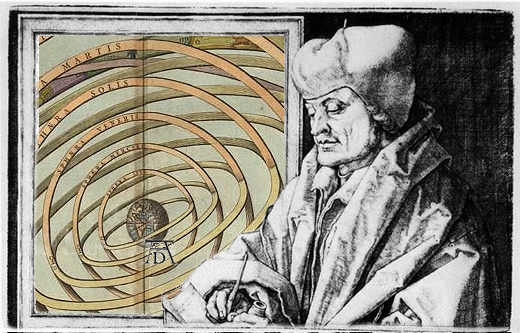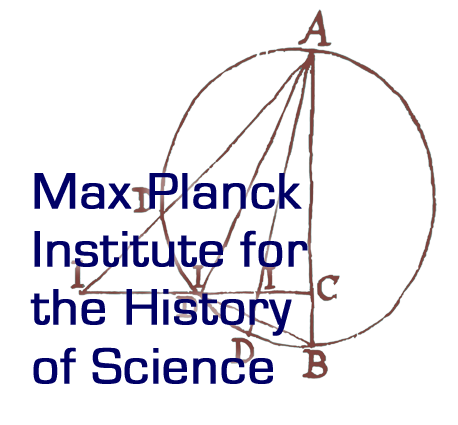SPECIAL ISSUE - ERASMIAN SCIENCE
Posted on 2013-12-09ERASMIAN SCIENCE – The influence on Early-Modern science of Erasmus of Rotterdam and his legacy.
Call for papers for a special issue of the Journal of Interdisciplinary History of Ideas in collaboration with the Max Planck Institute for the History of Science – MPIWG, Berlin. Deadline: May 15, 2014.
 Erasmus of Rotterdam stands out, in cultural history, as the main representative of European humanism. His works influenced more than one generation of early modern scholars and intellectuals, he established an international respublica litterarum sharing common humanistic values, and his editorial activity set unprecedented high standards of scientific quality. His oeuvre radiated out particularly from major printing centers (Venice, Basel and Paris), and was immediately echoed in Britain and throughout continental Europe. The aim of this special issue of the Journal of Interdisciplinary History of Ideas is to answer the many relevant questions concerning whether the label “Erasmian Science” can be extended beyond the spheres of rhetoric, pedagogy, and the edition of religious texts: Are there significant Erasmian components in the dawn and development of Renaissance and Early-Modern science? Apart from his role as a public intellectual in the turmoil of his time (e.g., his irenic battle), did Erasmus influence scholarship in disciplinary fields that have so far escaped our attention? Were his activity, legacy, and networks connected with the development of early-modern natural, mathematical and empirical sciences?
Erasmus of Rotterdam stands out, in cultural history, as the main representative of European humanism. His works influenced more than one generation of early modern scholars and intellectuals, he established an international respublica litterarum sharing common humanistic values, and his editorial activity set unprecedented high standards of scientific quality. His oeuvre radiated out particularly from major printing centers (Venice, Basel and Paris), and was immediately echoed in Britain and throughout continental Europe. The aim of this special issue of the Journal of Interdisciplinary History of Ideas is to answer the many relevant questions concerning whether the label “Erasmian Science” can be extended beyond the spheres of rhetoric, pedagogy, and the edition of religious texts: Are there significant Erasmian components in the dawn and development of Renaissance and Early-Modern science? Apart from his role as a public intellectual in the turmoil of his time (e.g., his irenic battle), did Erasmus influence scholarship in disciplinary fields that have so far escaped our attention? Were his activity, legacy, and networks connected with the development of early-modern natural, mathematical and empirical sciences?
The most general interrogation that is to be dealt with in this special issue concerns the relationship between humanistic culture and early modern science. The relevance of philology for the Italian Renaissance of mathematics, as well as for Peurbach’s and Regiomontanus’s revival of Ptolemaic astronomy is beyond doubt. A desideratum in the history of science is an assessment of how Erasmus’s commitment was transmitted to the following generation of humanist scientists, for instance through his publication of the other Ptolemy, namely of the Geographia (1533).
Secondly, the set of humanistic values shared within his environment and network arguably persisted as an element of scientific deontology and of the ethics of knowledge. In this respect, it is worth mentioning, as a significant case, that the cultural environment of Nicholas Copernicus in Varmia was markedly influenced by Erasmian humanism and that Copernicus’s friend and Erasmus’s correspondent, the bishop of Chełmno Tiedemann Giese, authored the first scriptural apology for the heliocentric system, Hyperaspisten.
In the third place, Erasmus’s influence on circles and institutions of late Northern European humanism shall be reconsidered. Can Philippism be regarded as a Lutheran outcome of his cultural guidelines? Can French and German anti-Ramism, or the various unorthodox Ramisms, be interpreted as an Erasmian reaction to the anti-humanistic outlook of Petrus Ramus and his followers? How did Erasmian humanism circulate within Protestant academic institutions, and how were their scientific curricula permeated by his views?
A further question relates to the link between Erasmism and mathematics (and also mathematical physics). In fact, although Erasmus did not in any way contribute to this field, Erasmism served as a fertile ground for mathematical studies. For instance, it may be suggested that an entangled reception of Erasmus and Cusanus permitted the advancement of mathematical studies in France. Did the legacy of Erasmus also provide a background for the reinforcement of practical and mixed mathematics in Germany and the Netherlands within a humanistic environment?
Moreover, Erasmus’s contribution to the editorial culture of his time raises a question about his role in the development of scientific editions and, more in general, of the intertwining of modern science and printing. How did his editorial standards, including the employment of images, enter the scientific production of the sixteenth and seventeenth centuries?
These latter considerations lead to a question about the “image” of Erasmus and the ideas it stood for in the eyes of different authors. For instance, Giordano Bruno’s heretically tinged admiration for him was radically different from that of “moderate” Melanchthonians belonging to the so-called deutscher Späthumanismus.
The different strands of the reception of Erasmus in the scientific discourse of the Renaissance need closer examination. Therefore, an essential aspect of this inquiry will be the reconstruction of regional, geographical, confessional and cultural divides out of which Erasmian Science and Erasmian scientific milieus emerged and established themselves in Italy, France, Great Britain, Flanders and the Netherlands, Switzerland, Poland, Germany and northern Europe.
Deadlines
Articles, along with a 300-words abstract and keywords, must be submitted before May 15, 2014
The special issue of the Journal of Interdisciplinary History of Ideas on Erasmian Science is planned for the end of 2014.
It will later appear also as a volume in the Edition Open Access series Max Planck Research Library for the History and Development of Knowledge (http://edition-open-access.de/index.html)
Submission
Submitted articles may be written in English or French, and shall be sent to the following e-mail address:
Submissions must contain original and unpublished work. Contributions are expected to adopt a genuinely interdisciplinary perspective in the history of ideas.
All submitted articles will undergo a double-blind review process. The text can be provided in .odt, .doc, .docx, or .pdf format, and must not include authors’ names and affiliations (pay attention to metadata and file properties), nor self-references that reveal the author’s identity.
Contacts
For further information, please contact the editors of the special issue:
Pietro Daniel Omodeo (Max Planck Institute for the History of Science, Berlin)
Enrico Pasini (Università degli Studi di Torino)
Authors are welcome to discuss their prospective contributions with the editors before submission.


